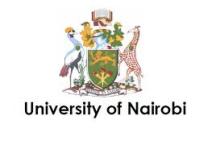Resource information
Livestock-wildlife interactions promote the transmission of a wide range of infectious diseases that constraint livestock production. We used a participatory appraisal approach to find out and rank infectious diseases of concern to pastoralists in a zone of intense wildlife-livestock interaction and another zone with limited interactions. Four villages were selected purposively in areas with intensive cattle-wildlife interactions (zone 1), and another two in areas with low to moderate cattle-wildlife interactions (zone 2). Data were collected in focus group discussions (FGDs) using participatory epidemiological methods (PE); each group had 8–13 participants. Results of impact matrix scoring from all sites indicated that malignant catarrhal fever (MCF), anthrax, foot and mouth disease (FMD), contagious bovine pleuropneumonia (CBPP), east coast fever (ECF) and African animal trypanosomiasis (ATT), in decreasing order, had the highest impact on livestock production. A Kruskal–Wallis test revealed a significant difference in FMD annual prevalence between cattle age groups (p < 0.001) and was the highest in animals > 4 years (median score of 32.5, range, 10–50). FMD had the highest impact on milk production, but based on veterinary costs (treatment costs), it was ranked second to CBPP. The study provides information on disease priorities that occur in the target zones in Mara ecosystem and which the local pastoralists must consider when accessing key ecosystem services such as water and pasture.





